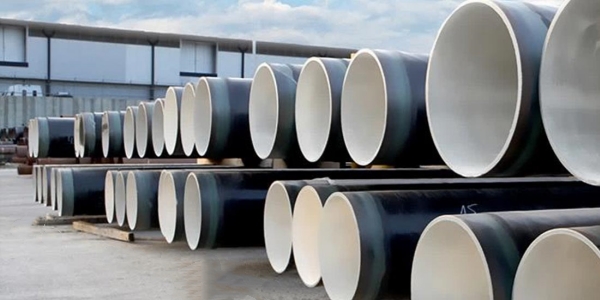3PE coated steel pipes have been widely used in the oil pipeline industry due to their good corrosion resistance, water vapor permeability resistance and mechanical properties. However, the ends of such anti-corrosion coated steel pipes are prone to warping problems. This article will introduce in detail how to avoid end warping of the anti-corrosion layer of 3PE coated steel pipes.

Measures To Avoid Warping Of The End Of The 3pe Anti-Corrosion Layer Include:
1. Without affecting the welding of the pipe mouth, appropriately increase the reserved length of epoxy powder at the end of the polyethylene layer to prevent 3PE anti-corrosion warping caused by long stacking time of steel pipes and severe metal corrosion at the pipe ends.
2. When anti-corrosion pipes are stacked in the open air for a long time, the pipe ends should be capped to prevent rainwater corrosion and serious corrosion of the pipe ends.
3. If the pipeline construction period is long, weldable anti-rust paint can be painted on the exposed metal at the pipe end to prevent the 3PE anti-corrosion layer from warping due to corrosion during storage.
4. Strictly control the polishing quality of the reserved welds at the pipe end. The outside of the polyethylene groove at the weld is the same as the other parts of the pipe body. Keep the length of the epoxy powder greater than 20mm to prevent the bottom of the epoxy powder at the weld from being corroded first, causing the 3PE anti-corrosion layer to warp. Pay attention to the following when grinding pipe end welds:
1) From the beginning of the weld grinding to the polyethylene chamfer, there should be a 10-20mm flat section of the polyethylene layer with no excess weld height and the same height as the polyethylene layer as the pipe body to ensure the extrusion of the polyethylene groove at the pipe end. Output and bonding quality.
2) The reinforcing ribs after grinding the weld seam should be as flush as possible with the pipe body, and there should be no obvious reinforcing ribs to avoid grinding away the epoxy powder when polishing the chamfering of the polyethylene layer.
3) The chamfering of the untrimmed top of the weld and the transition section of the repaired area should also be the same as the chamfering of the polyethylene layer (≤30°), so that the extrusion force of the squeeze roller is evenly applied to the polyethylene layer to prevent the groove from being Poor adhesion of the anti-corrosion layer causes the polyethylene layer to curl.
5. Only if the epoxy powder coating of the reserved section is completely protected can it delay edge warping caused by pipe end corrosion. Domestic pipe end polyethylene bevel processing uses wire wheels to grind, which will damage the epoxy powder coating. Grooves should be machined instead, and the bottom layer of the knife edge should have device limits to control the cutting depth of the tool to avoid damaging the epoxy powder coating.

 English
English Español
Español




 Tel : +86-18565811709
Tel : +86-18565811709 Email :
Email : 

 News
News




